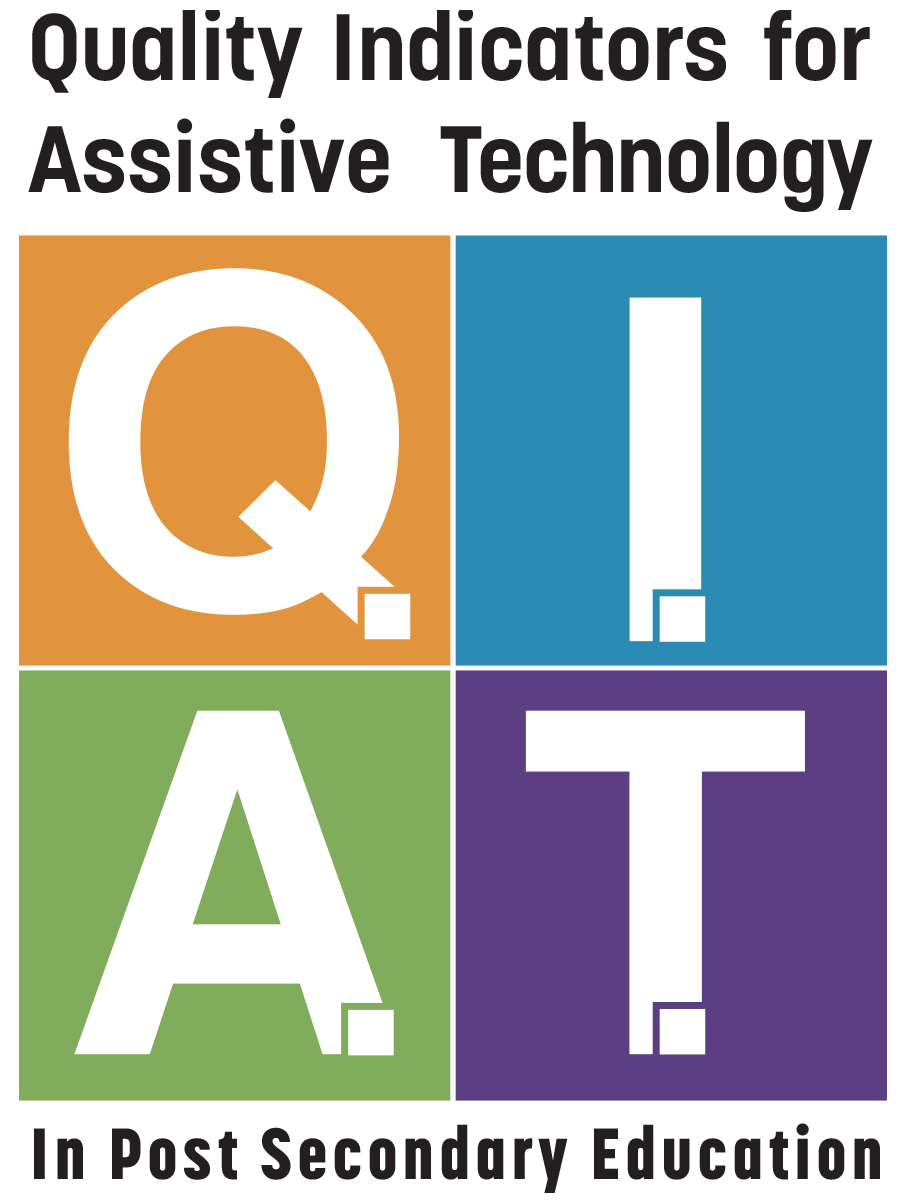>> The Disability Services staff created a composite self-rating using the QIAT-PS Campus Self-Evaluation Matrix. In this video, we’ll focus on how they planned to improve their evaluation of effectiveness activities and gather more information about the assistive technology services they provide. They had a team discussion about the critical elements of those indicators, how they did things now and how other programs addressed the same kinds of areas and indicators. They went looking on the internet for sample documents and ideas about things that they might be able to do also. The first indicator in Evaluation of Effectiveness that they chose to address is number one, the disability service office has a plan for evaluating the effectiveness of the provided assistive technology that is responsive to current student need and reviewed periodically and changed as necessary. The program had rated itself as a one in this indicator because they really had no plan for evaluating the effectiveness of the assistive technology services that they provided. They had a chance to brainstorm ideas and they decided that things that they really wanted to do was to follow-up with students on how their accommodations, including assistive technology, were working and have better in-department communication about which students were using ATN and for which classes. When they went online to look for resources, the team found a survey from Colorado State University Assistive Technology Resource Center that asked students for feedback about the AT services they were receiving and how those services were affecting their performance. The survey was divided into three areas. The first one was assessment of technology needs and training provided to students and asked questions like whether or not the assistive technology accommodation was timely, the kind of training that works best for the student, and asked for additional suggestions. The survey also had a section about how much the students use assistive technology and when they are most likely to use it. The team felt that questions like these would be very helpful in determining whether or not assistive technology was really a useful tool for their students. The third section of the survey asked about student’s comfort level with assistive technology and requesting the accommodations they needed within their classroom environments. The team also took a look at the Evaluation of Effectiveness indicator number three, and you can see here that they had rated themselves a two in this area because they did some evaluation of the effectiveness and use of assistive technology in academic environments, but rarely looked at other kinds of environments across the campus. They brainstormed some ideas and one of them was that they felt that they could connect to another campus-wide initiative that was about making sure that the campus itself was accessible to all students with disabilities and also all employees. When they went online, they also found a resource from George Mason University which talked about the kinds of services which were provided in that assistive technology initiative office. It described assessments, but also training for the George Mason University community at large and accommodations and adaptations that were provided across the campus. They looked at this site in more detail to come up with additional ideas about how they might implement their plans. The third Evaluation of Effectiveness indicator that the team addressed was indicator number four and it talks about the kind of documentation gathered by the disability service office about assistive technology use and whether or not that data is sufficient to evaluate how assistive technology impacts a student’s ability to stay in a class or program or graduate. The team had rated itself a two in this area. They gathered information about which students are using assistive technology, but not very much information about how that assistive technology use impacts student performance. They brainstormed some ideas about specific program data that could be collected and determined that one of the things they needed to do was to modify their database to collect more information about assistive technology use throughout their program. They thought of some ideas that they might be able to implement in the coming year, things like modifying the student database to include more information about students who use AT. And they wanted, at the end of that year, to do some comparison of performance data of individual students in classes where they use AT and classes where they don’t use AT and also to compare performance data for all of the students that they serve in terms of how assistive technology might affect student grade point averages, graduation rates or the number of classes that students were able to take in a term. At the end of a year, the team re-did the QIAT-PS Campus Self-Evaluation Matrix and rated themselves again in all the indicator areas. In the Evaluation of Effectiveness area, they felt that they had made good progress in two of the three indicators that they set as priorities, but in indicator number four, data collection about the effectiveness of AT use by individual students, they felt that they still had room to grow. They went back to their original plan and determined which other future Evaluation of Effectiveness activities they might want to implement in the second year of their QIAT-PS project.
Action Planning – A Case Study
No Comments
No comments yet.
Sorry, the comment form is closed at this time.

Posted in by Robin Jones on January 29, 2014